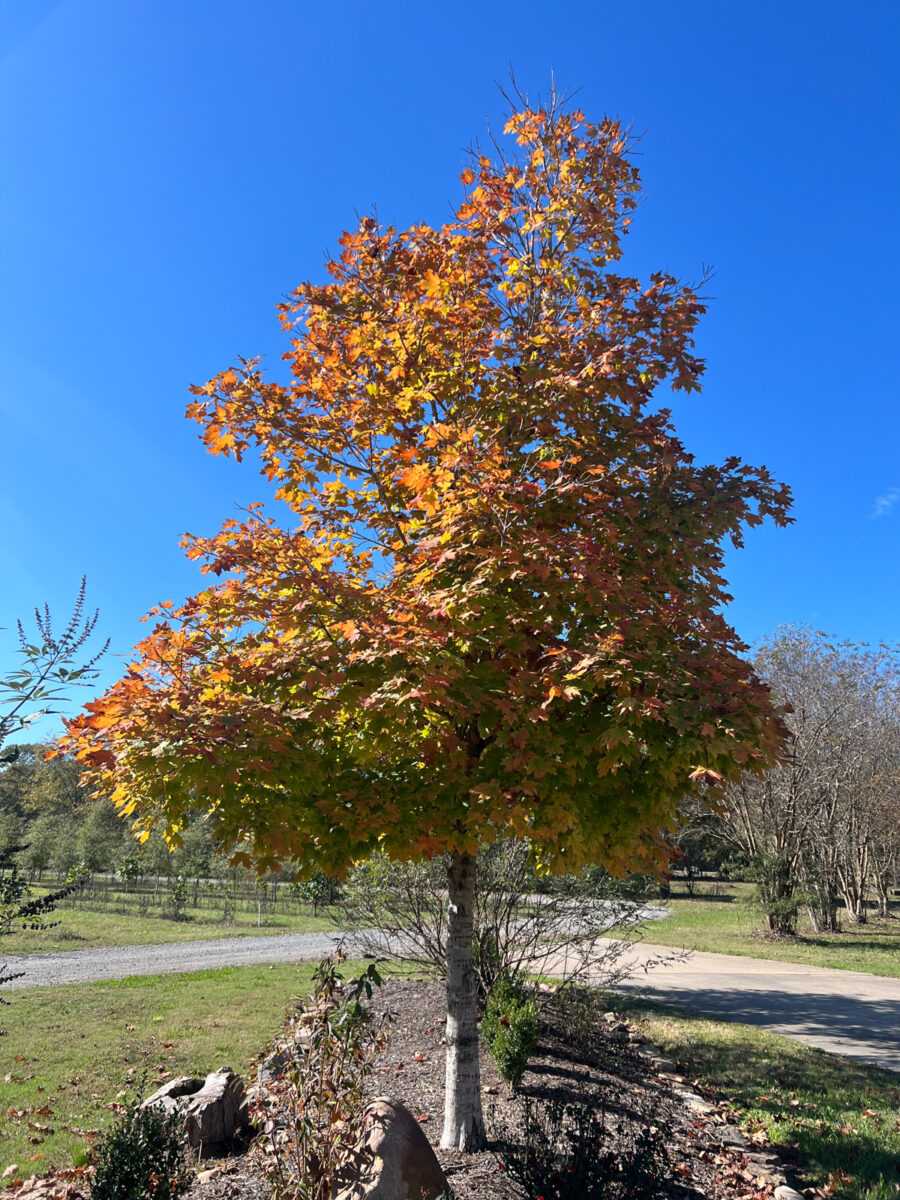
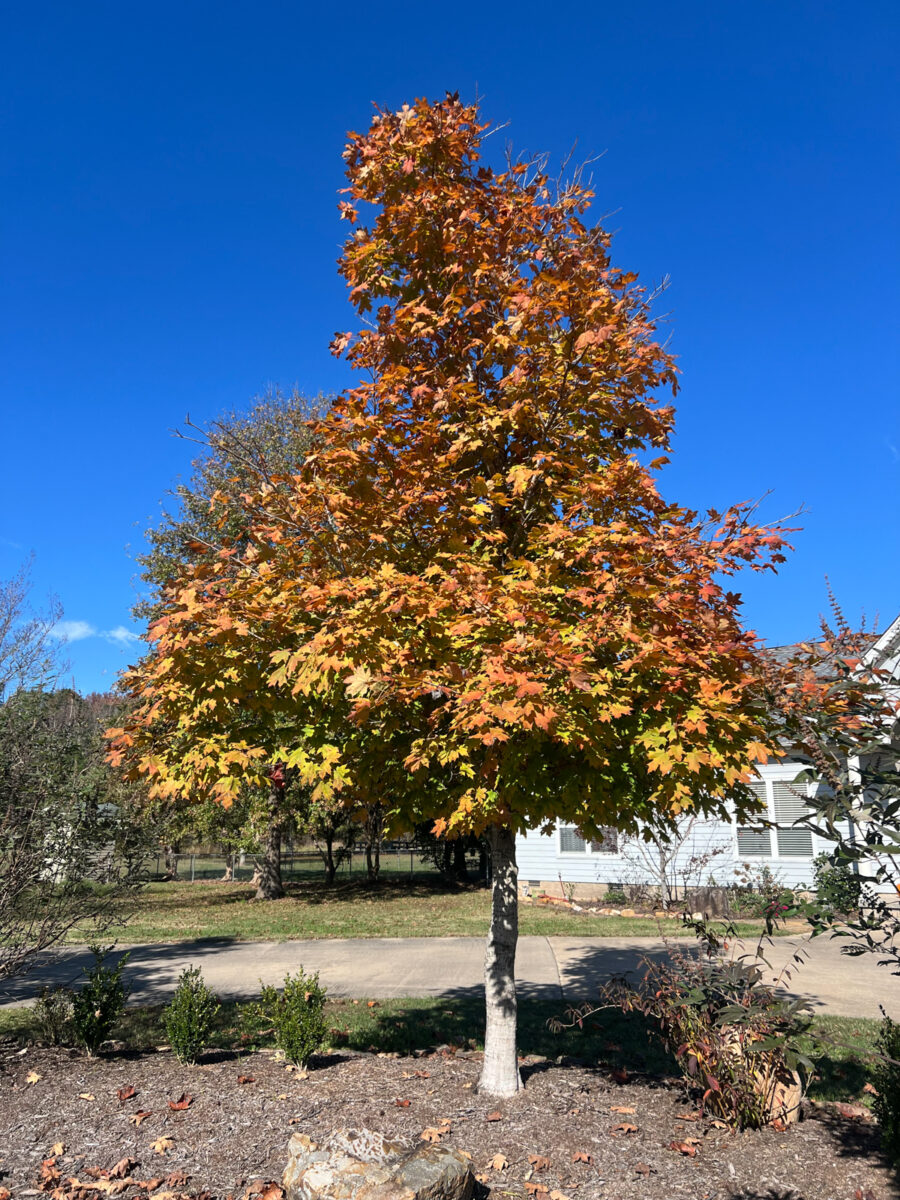
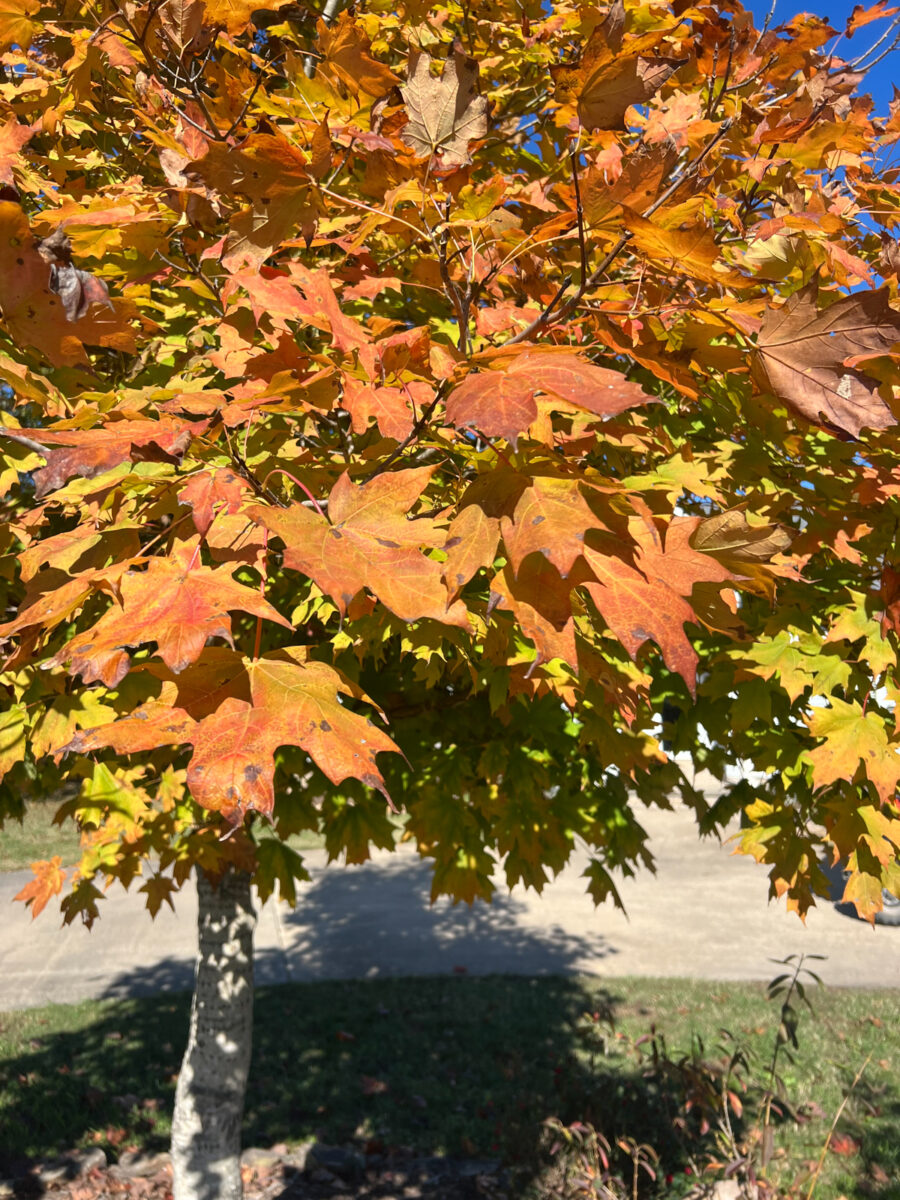
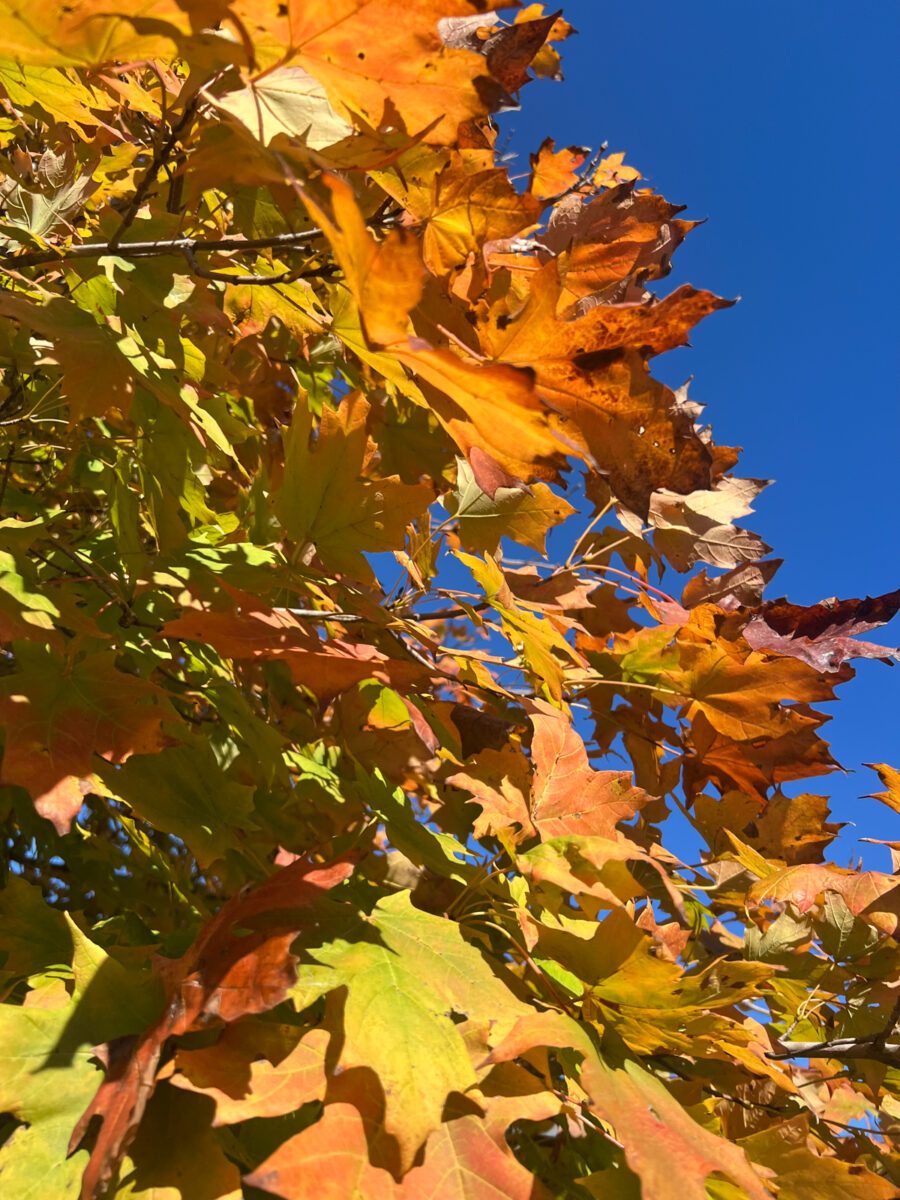
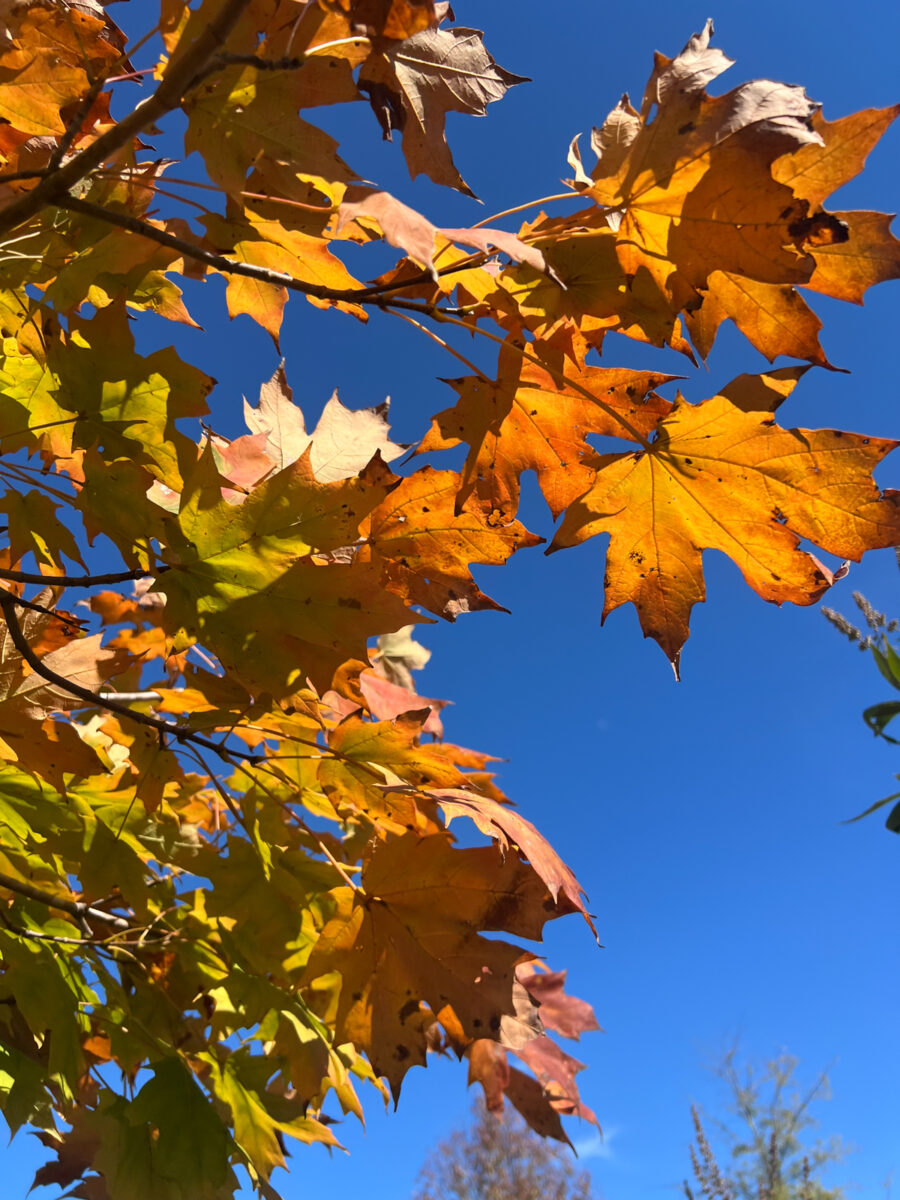
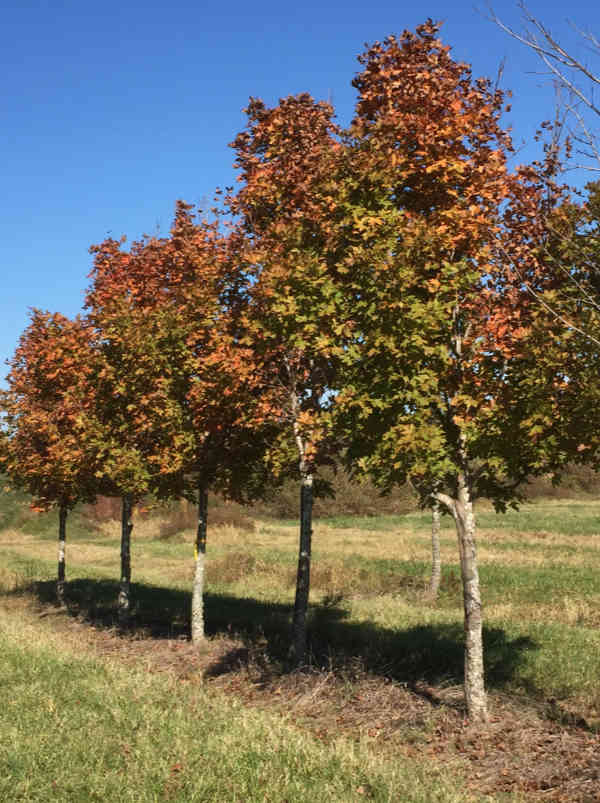
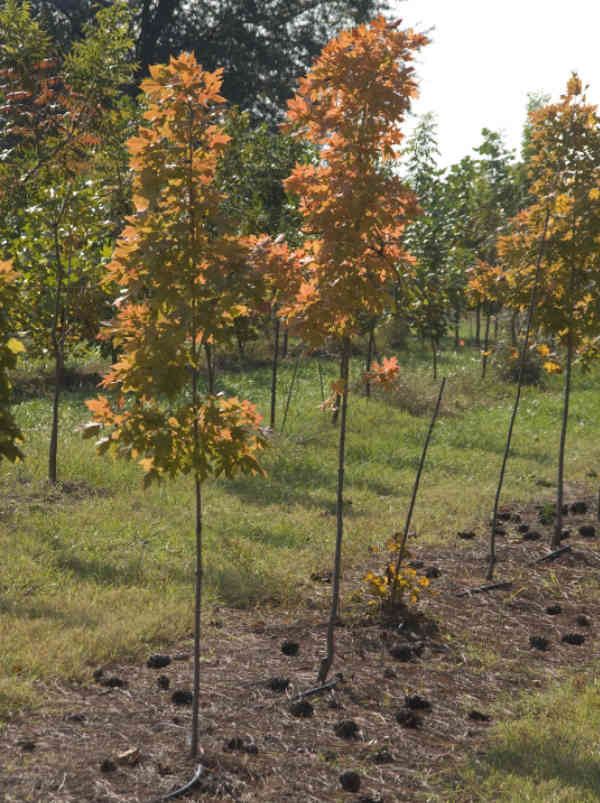
Acer saccharum
Description: The Sugar Maple is a large-sized tree that can reach heights of up to 100 feet, making it one of the more prominent species in North American forests. It is highly shade-tolerant, thriving in environments with limited sunlight, which allows it to flourish under the canopy of taller trees.
Twig/Bark: The bark is gray to grayish-brown and exhibits a smooth texture when the tree is young. As it matures, the bark becomes dark gray, deeply furrowed, and features long, peeling ridges. The twigs are slender and shiny, ranging in color from red to brown, and are adorned with pale lenticels that add to their aesthetic appeal.
Leaves: The leaves are palmately lobed, typically possessing five primary lobes, with additional smaller lobes present. The sinuses between the lobes form narrow, U-shaped angles. The upper surface of the leaves is dark green, while the lower surface is a paler green. In the fall, the foliage transforms into a vibrant display of yellow, orange, and red, making it a popular choice for ornamental planting.
Flower/Fruit: In spring, it produces greenish-yellow flowers that emerge alongside the new leaves. By fall, the tree bears fruit in the form of reddish to brown paired samaras, which also exhibit a U shape. These samaras play a crucial role in the tree’s reproductive cycle, facilitating seed dispersal.
Habitat: This species thrives in mesic upland and riparian forests, as well as shaded bluffs, glade margins, and stream banks. The Sugar Maple’s adaptability to a range of habitats contributes to its widespread presence across various ecological regions, where it serves as a vital component of the forest ecosystem.
